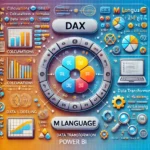In today’s fast-paced software development world, methodologies play a crucial role in ensuring timely delivery and quality products. Let’s dive deep into understanding Agile and its related methodologies.
What is Agile?
Agile is a set of principles for software development under which requirements and solutions evolve through the collaborative effort of cross-functional teams. It advocates adaptive planning, evolutionary development, early delivery, and continuous improvement, and it encourages flexible responses to change.
Agile Methodology Meaning
The term “Agile methodology” refers to an iterative approach to software development and project management that focuses on collaboration, customer feedback, and small, rapid releases.
https://synapsefabric.com/2023/09/16/microservices-vs-rest-api-unraveling-the-differences/
Is Agile a Methodology?
While often referred to as a methodology, Agile is more accurately described as a philosophy or mindset, under which various methodologies such as Scrum, Kanban, and Lean can be implemented.
Scrum and Agile Scrum
Scrum is a subset of Agile and is a lightweight process framework for agile development. The main highlight of Scrum is its use of fixed-length iterations, called sprints, which are typically one week to three weeks long.
Agile Scrum Methodology
Agile Scrum methodology is a project management and product development approach that prioritizes flexibility and collaboration. It involves a team led by a Scrum Master working in short phases, called sprints, and then reviewing the work and adjusting as necessary.
Scrum Alliance & Scrum Master Certification
The Scrum Alliance is a professional membership organization that promotes the use of Scrum. They offer training and certification for Scrum Masters and other Scrum roles.
Waterfall and Agile Waterfall Methodology
The Waterfall model is a linear and sequential approach to software development. Each phase must be completed before the next phase begins, with no overlapping or iterative steps.
Agile Waterfall methodology, on the other hand, attempts to combine traditional Waterfall methods with Agile principles, allowing for more flexibility while maintaining a structured approach.
Agile Software and Development
Agile software development refers to software development methodologies centered round the idea of iterative development. Requirements and solutions evolve through collaboration between cross-functional teams.
Agile Testing and Methodology
Agile testing is a software testing practice that follows the principles of agile software development. It is an iterative method where requirements evolve through collaboration.
Project Management and Agile Project Management
Project management involves planning, organizing, and overseeing projects to ensure they are completed efficiently and effectively. Agile project management is an iterative approach to planning and guiding project processes.
Other Key Terms and Concepts
- Adding more compute resources: Often referred to as “scaling out” or horizontal scaling.
- Systems Analysts Methodology: Systems analysts often use structured systems analysis and design methods (SSADM) or other methodologies to analyze business processes and provide solutions.
- Cryptocurrencies: The use of digital or virtual currencies, like Bitcoin. They can offer both anonymity (advantage) and can be subject to volatile market changes (disadvantage).
- Pre element tag: In HTML, text inside a
<pre>tag is displayed in a fixed-width font and preserves both spaces and line breaks. - Collaborative Approach in Agile: Emphasizes the importance of collaboration among stakeholders in Agile methodologies.
- Scrum Master: In Scrum, the Scrum Master ensures the team follows Scrum practices. They do not decide on the sprint backlog, but the Product Owner does.
- Intellectual Property: Creations that aren’t the intellectual property of anybody are often termed as “public domain.”
- PRINCE2 Methodology: A structured project management method.
- Power BI: A business analytics tool by Microsoft.
- Defect Life Cycle: Refers to the progression of a defect from its identification to its closure.
- Design Thinking: A problem-solving approach that involves empathy and experimentation.
- Waterfall Model in Software Engineering: A linear and sequential design approach.
- Iterative Meaning: Involving repetition; doing something over and over again to improve.
https://synapsefabric.com/2023/09/16/microservices-vs-spring-boot-choosing-the-right-path/
Conclusion
Agile and its related methodologies offer a flexible and collaborative approach to software development and project management. Whether you’re looking to understand the basics of Agile, delve into Scrum, or explore other related concepts, this guide provides a comprehensive overview to set you on the right path.






